From the Great Wall of China to the Taj Mahal, UNESCO‘s list of World Heritage Sites protects some of humanity’s most treasured historical monuments.
Now, 26 new sites have been added to this prestigious list.
This year’s additions include the original Disney Castle, a Diamond Mountain in North Korea, and the Killing Fields of Cambodia’s Khmer Rouge.
UNESCO has also included Port Royal – a mysterious sunken ‘Pirate City’ in Jamaica.
Of the 32 candidates nominated this year, those accepted include 21 cultural sites, four natural wonders, and one mixed location.
Following 10 days of deliberations in Paris, the United Nations Educational, Scientific and Cultural Organisation (UNESCO) has expanded its list to 1,248 sites across 170 countries.
That includes two countries, Guinea-Bissau and Sierra Leone, which have now claimed their first UNESCO world heritage sites.
Countries with sites added to the list must commit to preserving them and could receive funding from the UN to help with that conservation.
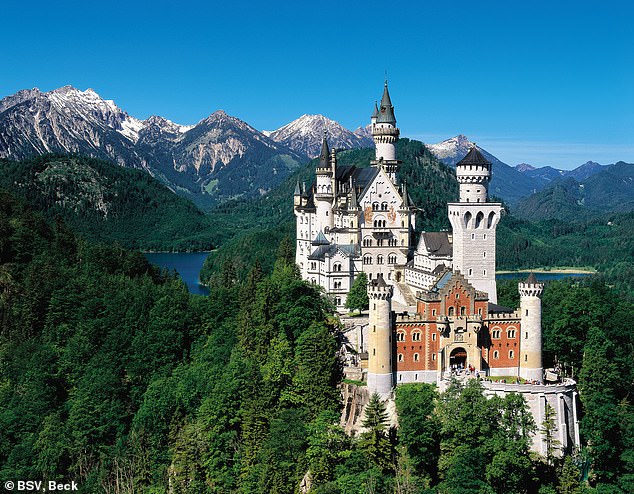
The palaces of King Ludwig II of Bavaria, including Neuschwanstein Castle, are just one of the 26 sites which have been made new UNESCO World Heritage sites this year
The Palaces of King Ludwig II of Bavaria, Germany
When Walt Disney needed inspiration for the castle in Sleeping Beauty, he turned to the stunning palaces of King Ludwig II of Bavaria.
Built between 1864 and 1886, the spires of Neuschwanstein Castle tower over the Bavarian Alps.
King Ludwig II, who would be declared mad shortly after the castle’s completion, drew inspiration for the castle’s design from fairy tales and the operas of Wagner.
The castle features grand murals of forests and cherubs alongside a hidden grotto built to connect the King’s living space and offices.
Despite its medieval appearance, Neuschwanstein was actually constructed with the height of 19th-century technology.
There is running water and automatically flushing toilets, hot air central heating, and even a system of electric bells used to summon servants.
Alongside Neuschwanstein, the King’s other homes -Herrenchiemsee, Linderhof, and the Royal House at Schachen – are now all UNESCO World Heritage sites.
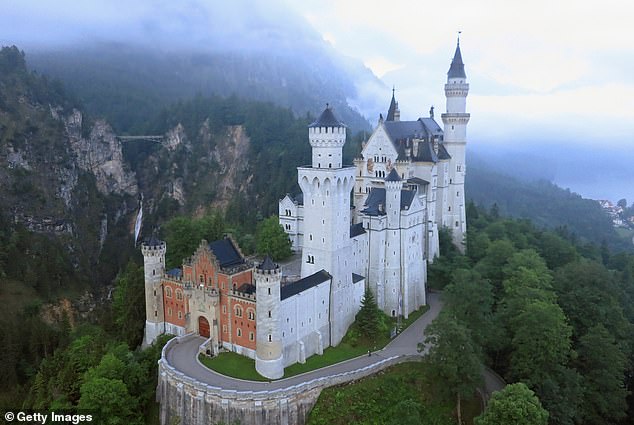
Neuschwanstein Castle was built between 1864 and 1886 and served as the inspiration for the castle in Disney’s Sleeping Beauty
Cambodian Memorial Sites, Cambodia
Between 1975 and 1979, Cambodia’s Khmer Rouge party killed between two and three million people.
Inspired by radical Maoist ideology, the party led by Pol Pot killed ethnic, educated, urban, or professionally trained individuals.
Perceived opponents of the regime were taken to sites which became known as the killing fields, where they were murdered and dumped in mass graves.
These graves were so shallow that bones of the dead can still be seen sticking out of the ground to this day.
One of these sites, formally an orchard located 6 miles (10km) south of the capital Phnom Penh, was made into a memorial site for the atrocity named the Choeung Ek Genocidal Center.
The centre includes a large Buddhist stupa, or tower, made out of hundreds of unidentified skulls from those killed at the site.
The Killing Fields and the notorious S-21 and M-13 prison, where thousands were tortured, have all been made part of the UNESCO world heritage list.
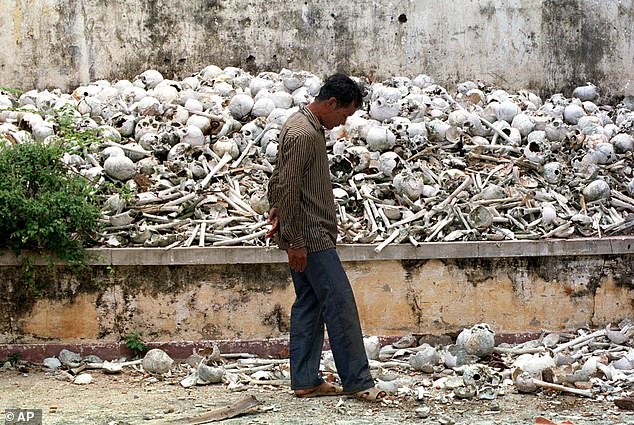
The UNESCO World Heritage Sites list now includes Cambodia’s Killing Fields, the sites where millions of people who were killed by the Khmer Rouge between 1975 and 1979. Pictured: A man walks through one of the killing field sites outside of the capital Phnom Penh
Mount Kumgang, North Korea
Known as the Diamond Mountain from the Sea, Mount Kumang is now one of three UNESCO World Heritage sites in North Korea.
UNESCO has added the area as a mixed site, meaning it has outstanding natural and cultural value.
This area is renowned for its valleys, waterfalls, incredible biodiversity, and peaks rising to nearly 5,250 ft (1,600m).
Due to the local climate, these mountains are constantly shrouded by a changing pattern of mists, rain, and clouds.
Additionally, the area has been considered sacred by Korean Buddhists for hundreds of years.
The site is home to ancient stone carvings and temples dating back as far as the 5th century, including three which are still active today.
Until January last year, the site was also one of the very few locations open to South Korean tourists as part of the so-called ‘Sunshine Policy’.
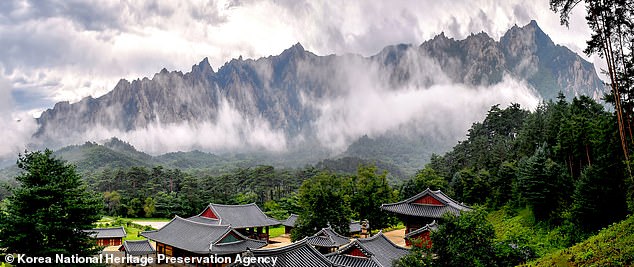
Known as the Diamond Mountain from the Sea, Mount Kumang is the most recent of three UNESCO World Heritage sites in North Korea
Gola-Tiwai Complex, Sierra Leone
The Gola-Tiwai Complex is the first UNESCO World Heritage site in Sierra Leone and has been added following decades of conservation work in the region.
The complex will include the 700 square kilometre Gola-Tiwai National Park as well as the nearby Tiwai Island Wildlife Sanctuary.
Once considered at threat by logging and civil war, this rainforest is home to a bewildering array of rare and endangered species.
The area hosts more than 1,000 plant species, 55 mammals, up to 448 birds, and 600 species of butterfly.
It is also the last remaining home of the forest elephant and pygmy hippopotamus in Sierra Leone.
Pygmy hippos, made famous by Khao Kheow Open Zoo’s Moo Deng, are now found in only a handful of waterways in West Africa and are considered endangered.
The forest is also key to the survival of some species we would recognise here in the UK, such as migratory swifts which stop to rest in Gola-Tiwai on their way to Europe.
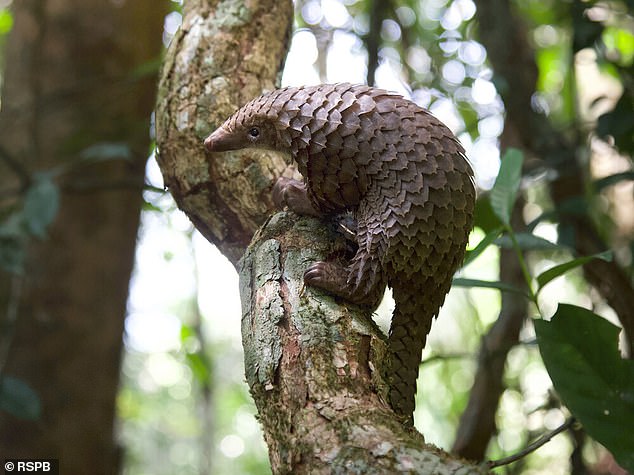
Sierra Leone’s first UNESCO World Heritage site is the Gola-Tiwai rainforest, which is home to hundreds of rare and endangered animals such as the white-bellied pangolin
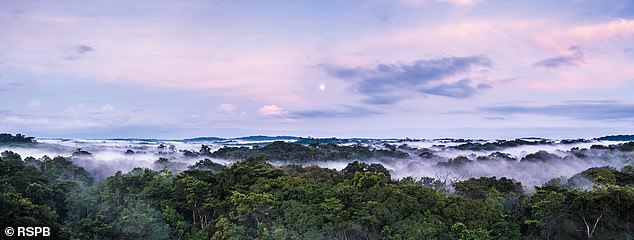
The complex will include the 700 square kilometre Gola-Tiwai National Park (pictured) as well as the nearby Tiwai Island Wildlife Sanctuary
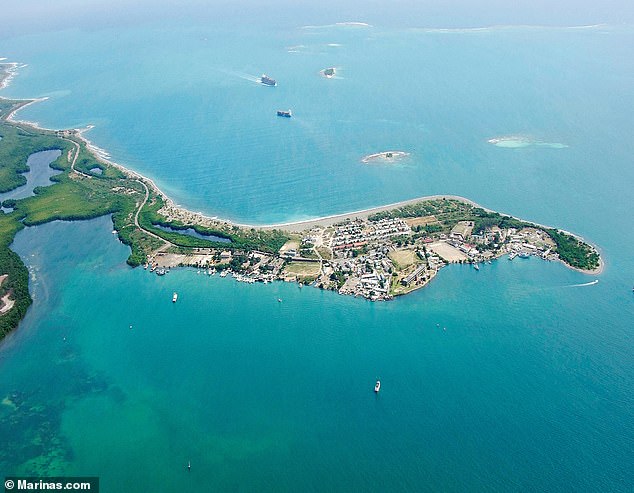
Port Royal, Jamaica, was a thriving English trading town and notorious pirate haven in the 17th century before an earthquake caused the city to fall into the ocean
Port Royal, Jamaica
In the 17th century, the town of Port Royal was a major hub of English trade in the Caribbean and a notorious pirate haven nicknamed ‘the wickedest city of Earth’.
The city was home to English and Dutch ‘Privateers’, gangs of marauding pirates encouraged to attack the Spanish fleets.
On shore, these wealthy criminals would spend their ill-gotten cash in the city’s many taverns, gambling dens, and brothels.
However, a major earthquake in 1692 and an accompanying tsunami sank most of the port into the ocean.
What remained of the town was then destroyed by a fire and a hurricane in the following years, all but wiping Port Royal off the map.
Today, the remains of the pirate town are still found beneath the waves where they have been converted into a major archaeological site.
This area, known as the Archaeological Ensemble of 17th Century Port Royal, has now been officially recognised as an UNESCO World Heritage site.
